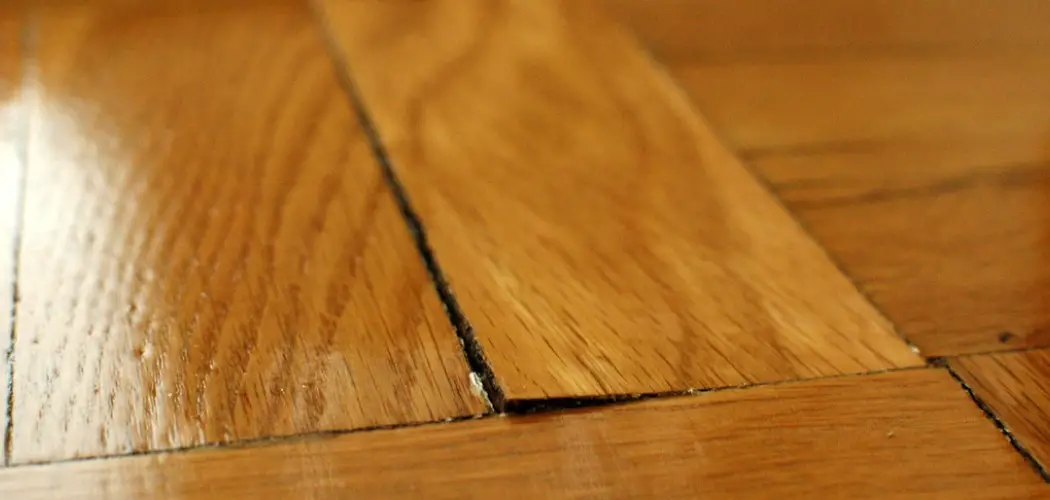Hardwood floors are a timeless choice for many homeowners due to their aesthetic appeal and durability. However, like any other home furnishing, they are susceptible to damage, particularly from water. Water can seriously harm your precious hardwood floors if not addressed promptly and correctly, whether it’s from flooding, leaks, or high humidity. This comprehensive guide aims to educate you on how to fix water damage on hardwood floors effectively. It will provide insights into professional help, what benefits you reap from timely repairs, common mistakes to avoid, answers to frequently asked questions, and a conclusion that reiterates the importance of maintaining your hardwood floors. Let’s begin by understanding how to choose the right professional help.
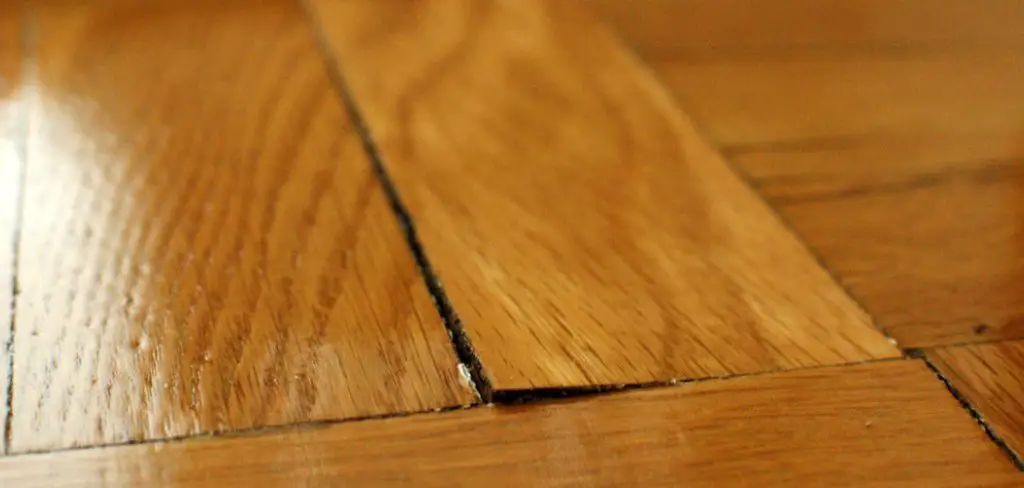
What Is Water Damage on Hardwood Floors?
Water damage on hardwood floors can occur in various forms. It can be a minor discoloration, warping, or even structural damage. Three main types of water damage can happen to hardwood floors:
Surface Damage:
This type of damage is the most common and visible form of water damage on hardwood floors. It occurs when water sits on the surface of the wood for too long, causing discoloration and staining.
Warping:
When a large amount of water penetrates through the floorboards, it can cause them to warp or buckle. This type of damage is more severe and requires immediate attention to prevent further harm.
Mold Growth:
Mold thrives in damp and humid environments, making water damage on hardwood floors the perfect breeding ground for it. Mold can cause structural damage and also pose a health hazard to you and your family.
How to Assess the Damage?
Before jumping into fixing the water damage on your hardwood floors, it’s essential to assess the extent of the damage first. This step will help determine the best method for repairing the damage. Here’s how you can assess the damage:
Identify the Affected Area:
Walk around your home and visually inspect the hardwood floors to identify the areas where water damage has occurred. Look for discoloration, warping, or signs of mold growth.
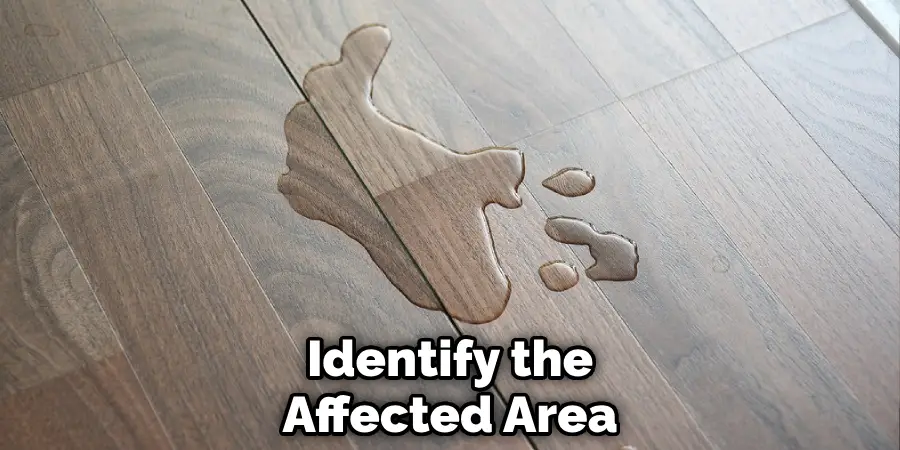
Check for Moisture:
Use a moisture meter to check the moisture level in the affected area. This step will help you gauge the severity of the damage and if it has spread to other areas.
Consider the Type of Wood:
Different types of wood react differently to water damage. For example, oak is more resistant to warping than pine. Knowing the type of wood can help determine how to fix the damage effectively.
How to Fix Minor Water Damage?
If the damage is minor and has not affected a large area, you can try these DIY methods to fix it:
Blotting:
For surface damage, the first step is to remove any standing water. Use a clean towel or mop and gently blot the affected area until it’s dry.
Sanding:
If the wood has started to warp, you may need to sand down the uneven areas once they are completely dry. This can help even out the surface and remove any discoloration.
Bleaching:
If the water damage has caused staining, you can use wood bleach to lighten or remove the stain. Follow the instructions on the product carefully and test it on a small, inconspicuous area first.
Can You Fix Major Water Damage on Hardwood Floors?
Unfortunately, major water damage on hardwood floors may require professional help. If the floorboards have started to buckle or if mold growth is present, it’s best to call in a professional restoration company. They have the expertise and equipment to effectively remove excess water, dry the area, and prevent further damage. But if you don’t have access to professional help, here are some steps below that you can take
A Simple Guide on How to Fix Water Damage on Hardwood Floors
1. Identify the Extent of The Damage.
The first step in repairing water damage on hardwood floors is to assess the severity of the problem. If the damage is minor, such as a small water spill, you may only need to clean and dry the affected area thoroughly. However, if the damage is more extensive, such as a flood or a leak that has caused widespread warping, you may need to call in a professional to repair or replace the damaged planks. Look for signs of cupping, buckling, staining, or discoloration to determine the extent of the damage.
2. Remove Excess Moisture.
Before you can start repairing your hardwood floors, you need to ensure that all moisture has been removed from the affected area. Use towels, mops, or a wet/dry vacuum to soak up as much water as possible. Don’t let water stand on the floor for too long, as it can seep into the wood and cause further damage. Once you have removed all visible moisture, use fans or dehumidifiers to dry the area completely. This may take several days, depending on the extent of the damage.
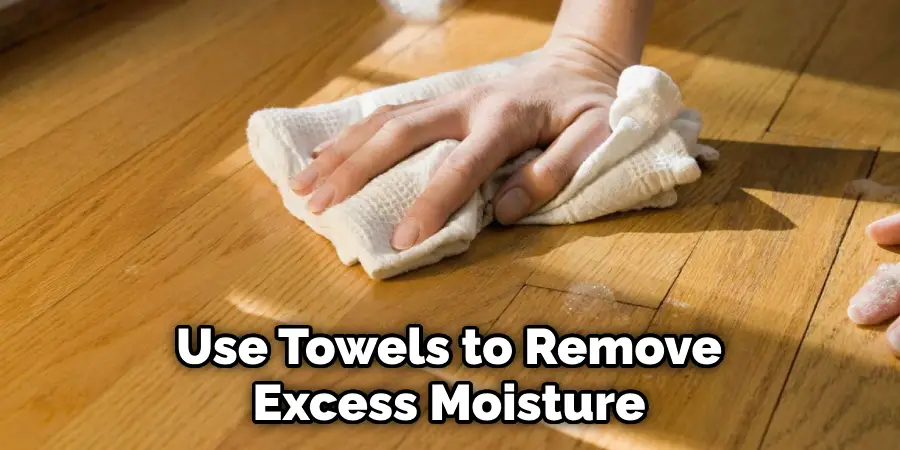
3. Sand and Refinish the Affected Area.
If the water damage has caused staining or discoloration in the wood, you may need to sand and refinish the affected area. Use fine-grit sandpaper to smooth out any rough spots or raised edges caused by cupping or buckling. Then, apply a wood stain or finish matching the surrounding planks’ color and texture. Be sure to blend the new finish seamlessly with the existing finish to avoid visible seams or patches.
4. Replace Damaged Planks.
If the water damage has caused severe warping or buckling in the hardwood planks, you may need to replace them entirely. This can be challenging and time-consuming, as you need to remove the damaged planks without damaging the surrounding ones. Use a circular saw or handsaw to carefully cut out the damaged planks, not damaging the tongue-and-groove edges that attach them to the adjacent planks. Then, install new planks of the same species and grade, using nails, glue, or both to secure them. Finally, sand and refinish the new planks to match the surrounding floor.
5. Prevent Future Damage.
Once you have repaired your water-damaged hardwood floors, it’s essential to take steps to prevent future damage from occurring. Use rugs or mats in high-traffic areas to protect the wood from scratches, spills, and other potential sources of damage. If you have pets, make sure their nails are trimmed to avoid scratching the floor’s surface. Additionally, check for leaks or other water sources regularly to prevent future incidents.
6. Consider Professional Help.
If the damage is severe or extensive, it’s best to call in a professional restoration company. They have specialized equipment and expertise to effectively handle hardwood floors’ water damage. They can also assess the situation and recommend the best course of action to repair your floors.
7. Regular Maintenance is Key.
Prevention is always better than cure when it comes to water damage on hardwood floors. Therefore, regular maintenance is crucial in keeping your floors looking their best. This includes cleaning up spills promptly, avoiding excessive humidity, and properly maintaining any appliances or plumbing fixtures that could cause leaks. Regularly inspect your hardwood floors for signs of damage and address them promptly to prevent further issues.
Some Considerations Things When You Need to Choose a Professional Service
If you decide to hire a professional restoration service, here are some things to consider when choosing the right one:
- Reputation: Research the company’s reputation and read reviews from past customers to ensure they have a track record of quality and satisfactory work.
- Experience: Look for a company with plenty of experience dealing with water damage on hardwood floors. They will have the knowledge and skills to handle the situation effectively.
- Certifications: Check for any certifications or licenses that the company holds, as this can ensure they adhere to industry standards and guidelines.
- Insurance: Ensure the company has insurance coverage in case further damage occurs during the restoration process.
- Cost: While finding a reasonably priced service is essential, be wary of companies with significantly lower prices than others. This could be a red flag for poor quality work or hidden costs.
Remember that water damage on hardwood floors should be addressed promptly and effectively to prevent further damage and costly repairs. By following these steps and considering professional help when necessary, you can ensure your hardwood floors stay beautiful and in top condition for years to come. So, don’t delay in taking action and fixing any water damage on your hardwood floors to preserve their beauty and functionality.
Benefits of Fixing Water Damage on Hardwood Floors
Maintain the Value and Appearance of Your Home:
Water damage on hardwood floors can significantly decrease a home’s value and make it less appealing to potential buyers. Repairing the damage ensures that your floors look their best, maintaining your home’s aesthetics and market value.
Avoid Health Hazards:
If not properly repaired, water damage can lead to mold growth, which can cause various health issues. By fixing the damage promptly, you can prevent any potential health hazards for you and your family.
Prevent Further Damage and Costly Repairs:
Addressing water damage on hardwood floors quickly and effectively can prevent more extensive damage, saving you from costly repairs in the future.
Increase the Longevity of Your Hardwood Floors:
By properly repairing water damage, you can extend the lifespan of your hardwood floors. This saves you money in the long run and ensures that your floors remain beautiful and functional for many years to come.
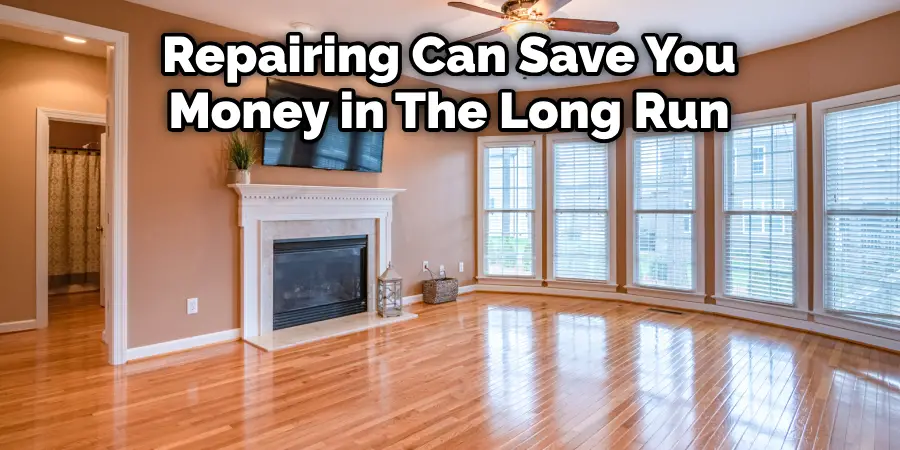
Some Common Mistakes People Make When Trying to Fix Water Damage on Hardwood Floors
- Using too much water when cleaning: Excess water can penetrate the wood, causing further damage and making it more challenging to repair.
- Not allowing enough time for drying: Rushing the drying process can lead to remaining moisture, promoting mold growth and further damage.
- Not addressing the root cause of the problem: Simply fixing the visible damage without addressing the source of the water can lead to future issues.
- Trying to sand the damaged area without proper knowledge or equipment: Improper sanding techniques can cause irreparable damage to your hardwood floors.
Remember to take your time and properly research and assess the situation before attempting any repairs on your own. It’s always best to seek professional help if you’re unsure or inexperienced in handling water damage on hardwood floors.
Frequently Asked Questions
1. What Causes Water Damage on Hardwood Floors?
Water damage on hardwood floors can be caused by a variety of factors, such as flooding, leaks, spills, and high humidity levels. Any source of excess moisture can potentially damage your hardwood floors if not addressed promptly.
2. How Long Does it Take for Water to Damage Hardwood Floors?
The amount of time it takes for water to damage hardwood floors can vary greatly depending on the amount of water and the type of wood. However, damage can start appearing within a few minutes to hours of exposure.
3. Can Water-Damaged Hardwood Floors Be Repaired?
Yes, water-damaged hardwood floors can often be repaired, depending on the severity of the damage. Minor damage can often be fixed using DIY methods, while severe damage may require professional restoration or replacement of the affected planks.
4. How Much Does it Cost to Repair Water-Damaged Hardwood Floors?
The cost of repairing water-damaged hardwood floors can vary greatly depending on the extent of the damage and whether you require professional help. It’s best to get an estimate from a professional restoration company for an accurate understanding of the costs involved.
5. What are the Signs of Water Damage on Hardwood Floors?
Signs of water damage on hardwood floors can include cupping, warping, discoloration, staining, and the presence of mold or mildew. If you notice any of these signs, taking action quickly is important to prevent further damage.
Conclusion
In conclusion, addressing water damage on hardwood floors promptly and accurately is vital to protect your investment and maintain the beauty of your home. Whether you decide to tackle the problem on your own or hire professional services, always ensure to address the root cause of the problem, use appropriate techniques, and not rush the drying process. The key is to be proactive in maintaining your hardwood floors and observant of any signs of water damage. With proper care and timely action, your hardwood floors can serve you beautifully for many years to come. Thanks for reading our blog post about how to fix water damage on hardwood floors.

